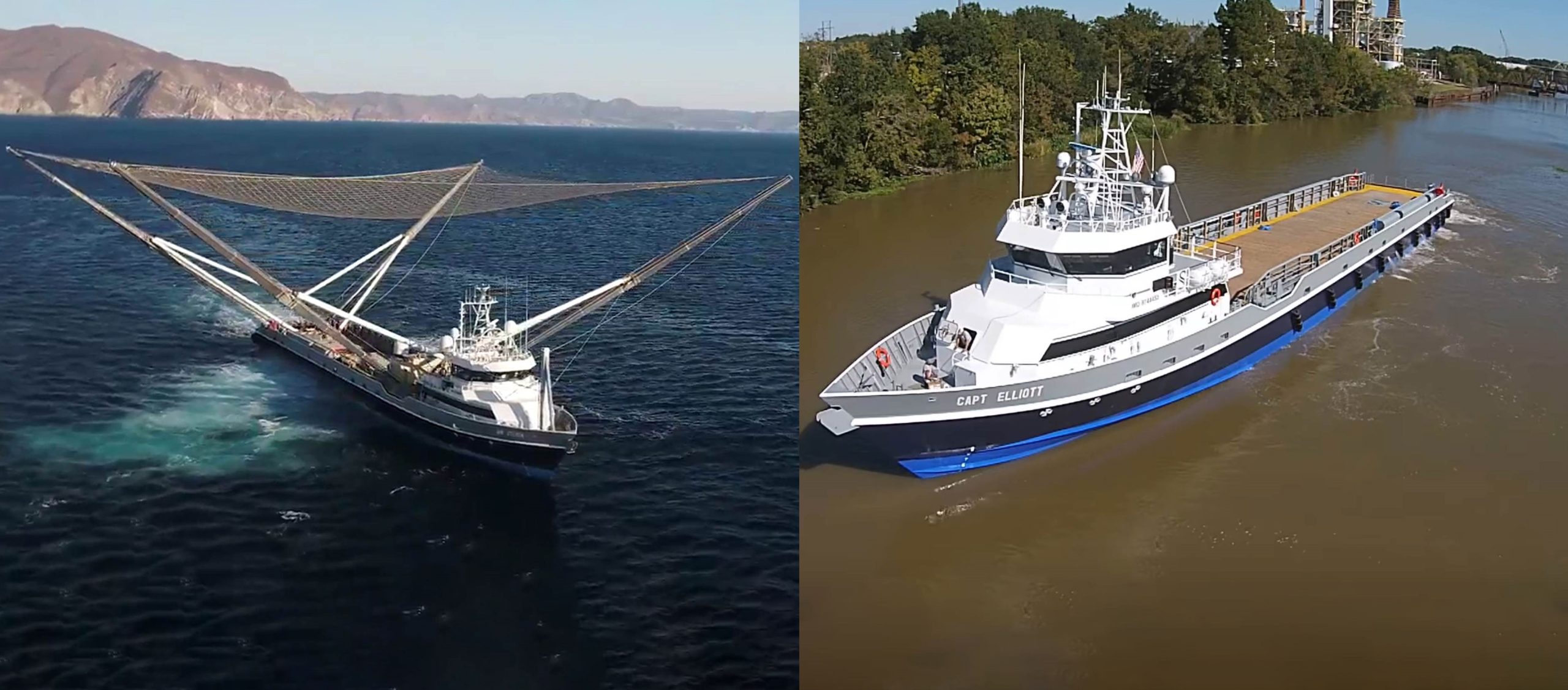
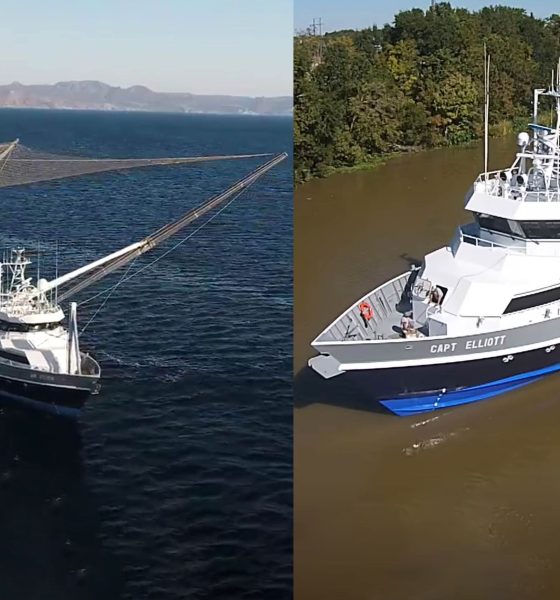
News
SpaceX adds new ship to fleet after fairing catcher Ms. Tree nails second recovery in a row
In a telltale sign that SpaceX is growing much more confident in its ability to consistently recover Falcon 9 fairings, the company has accepted delivery of second recovery ship almost identical to GO Ms. Tree (formerly Mr. Steven) just days after nailing its second fairing catch in a row.
Previously known as M/V Captain Elliott, the new ship appears to have been acquired (or leased) by Guice Offshore (GO) from SEACOR Marine, who purchased Elliott from struggling marine services company Seatran Marine in 2017. One way or another, SpaceX now has a pair of Port Canaveral-based fairing recovery ships in hand – named Ms. Tree and Ms. Chief – and is thus making excellent progress towards catching and reusing both halves of the same Falcon 9 (or Heavy) fairing.
Splurging on ‘ships
Put simply, whoever is paying for or has paid for the two fast supply vessels (FSVs) that are now a part of SpaceX’s rocket recovery fleet has/had a tidy sum to spend. For ships as large, new, and high-performance as Ms. Tree and Ms. Chief, both completed in the mid-2010s, SpaceX or GO would be lucky to pay less than $10M apiece and each ship could easily cost more than $20M, depending on a variety of unknowns. Previous owner Seatran Marine is/was admittedly in dire financial straits, so that could have resulted in an effective fire-sale discount.
Regardless, this is to say that SpaceX was likely willing to splurge and open its wallet wide for extremely high-quality fairing recovery vessels because of just how expensive those fairings are. According to CEO Elon Musk circa 2017, it costs SpaceX $5-6M total to produce a set of Falcon fairing halves, equivalent to roughly 10% of the cost of a Falcon 9 launch ($50M-60M).
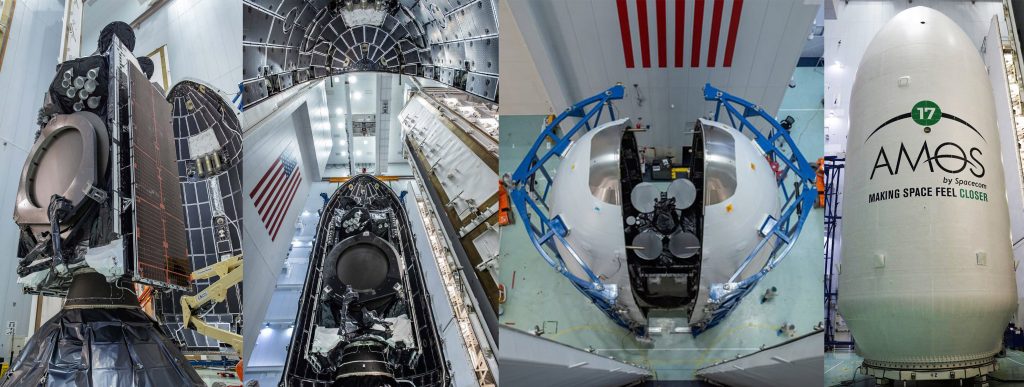
As an example, assume that SpaceX paid a full $50M for Ms. Tree and Ms. Chief – effectively a worst-case cost scenario. Assume that recovering and reusing net-caught Falcon fairings still costs half as much as building new fairings ($3M for two halves), also likely a worst-case scenario given the relative mechanical and propulsive simplicity of fairings.
In this mediocre-at-best scenario, it would still take SpaceX less than 20 launches with both halves recovered to completely recoup the cost of both fairing recovery ships. In the event that reusing caught fairings is only 25% as expensive as building new fairings, SpaceX could recoup its fleet investments in just 10 launches. In fact, cost reduction may even be a secondary consideration next to the potential for effectively doubling fairing production with the same facilities. From that perspective, spending, say, $50M on development and another $50M on cutting-edge recovery vessels could easily be a bargain, especially compared to the $1B+ SpaceX has spent deloping Falcon 9 booster reusability.
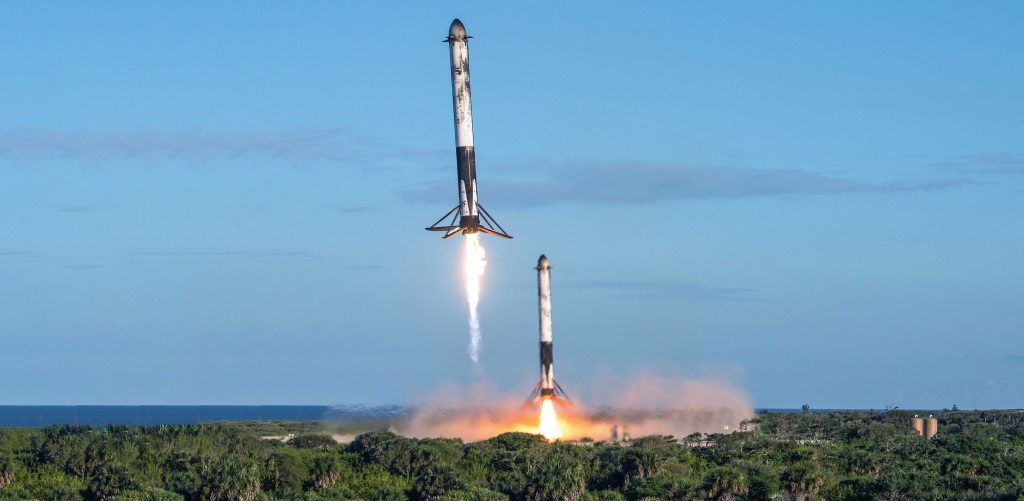
Fairing-catcher Mk4
With GO Ms. Chief’s August 10th arrival at Port Canaveral, SpaceX’s team of Florida-based recovery engineers and technicians will now be tasked with modifying the ship for Falcon fairing catching. SpaceX completed its first fairing recovery-focused modifications back in late 2017, likely producing what was the first version of fairing recovery tech (Mk1). The net proved to be far too small and was replaced in summer 2018 with a net and arms likely 4X larger (Mk2).
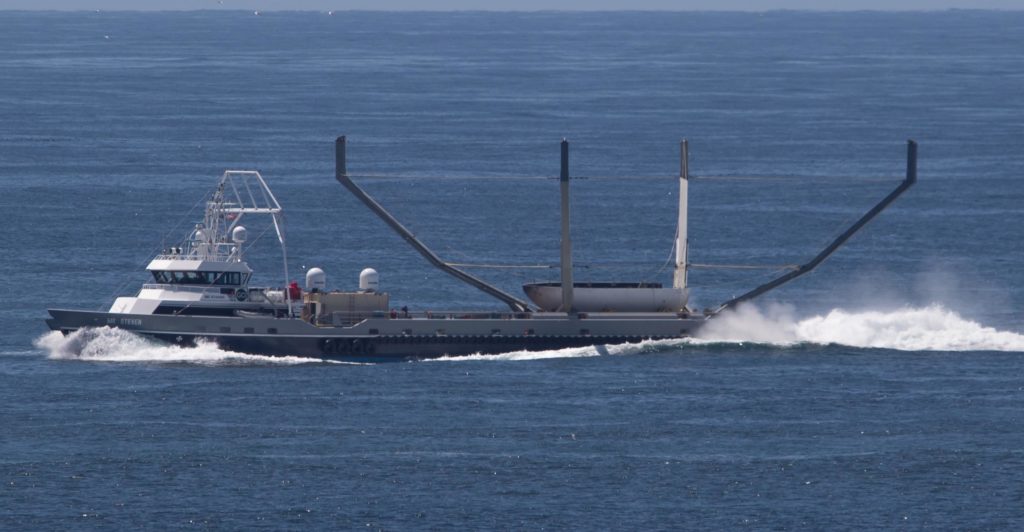
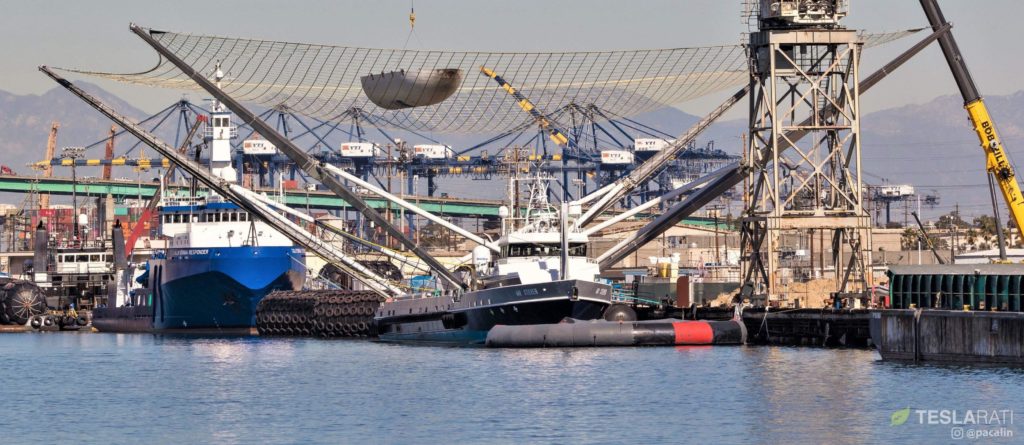
Roughly half a year and several missed catches after Mr. Steven’s Mk2 net was installed, the ship transited the Panama Canal and arrived at Port Canaveral in February 2019. Barely a week or two later, Mr. Steven suffered a failure at sea – well before a planned catch attempt – that saw the ship limp back to port missing the entirety of its net and two of four arms.
After another four months in port, SpaceX installed a third net and arms system on Mr. Steven, featuring distinct differences and apparent upgrades that likely make it Mk3. Shortly after installation and a quick renaming from Mr. Steven to GO Ms. Tree, Ms. Tree’s inaugural Mk3 recovery attempt culminated in SpaceX’s first and second successful fairing catches – back-to-back – on June 24th and August 6th.
Finally, this brings us to the blank slate that is GO Ms. Chief. Compared to Ms. Tree, both vessels are nearly identical: both are built by Gulf Craft, LLC, both are 205 ft x 34 ft (62m x 10m), both have decks rated for ~405 metric tons (900,000 lb), and have top speeds of 26-32 knots (30-37 mph, 50-60 km/h; fully-loaded vs. empty). The lone point of difference is power: Ms. Chief’s engines produce 500 more horsepower and its generators produce an additional 120 kW of power, respective improvements of 5% and 16% relative to Ms. Tree (Mr. Steven).
Despite both ships being nearly identical, SpaceX is unlikely to simply copy and paste Ms. Tree’s thus far successful arms and net, likely instead doing what the company is famous for and fabricating a new and improved variant of the fairing recovery mechanism. This would presumably translate to Mk4. Conveniently, SpaceX appears to be heading into a rare period of no launches, likely stretching almost three months from August 6th (AMOS-17) to late October.
If Mr. Steven and Ms. Tree’s transformations are anything to go by, that hefty chunk of time that should be more than sufficient to fully outfit Ms. Chief with a fresh fairing recovery mechanism, assuming SpaceX has been simultaneously fabricating the hardware in anticipation of Ms. Chief’s arrival.
For now, we’ll have to wait and see if SpaceX’s next launches – both believed to be 60-satellite Starlink missions – will mark the recovery debut of Ms. Chief, as well as the first attempted catch of both Falcon fairing halves. Additionally, following SpaceX’s second successful fairing half catch on August 6th, it’s possible that the company has two recovered halves capable of making a full, flight-proven fairing. Either way, a Starlink launch will likely support the flight-debut of a reused fairing and will almost certainly host the first attempted simultaneous recovery of both fairing halves.
Check out Teslarati’s Marketplace! We offer Tesla accessories, including for the Tesla Cybertruck and Tesla Model 3.

News
Tesla launches its new branded Supercharger for Business with first active station
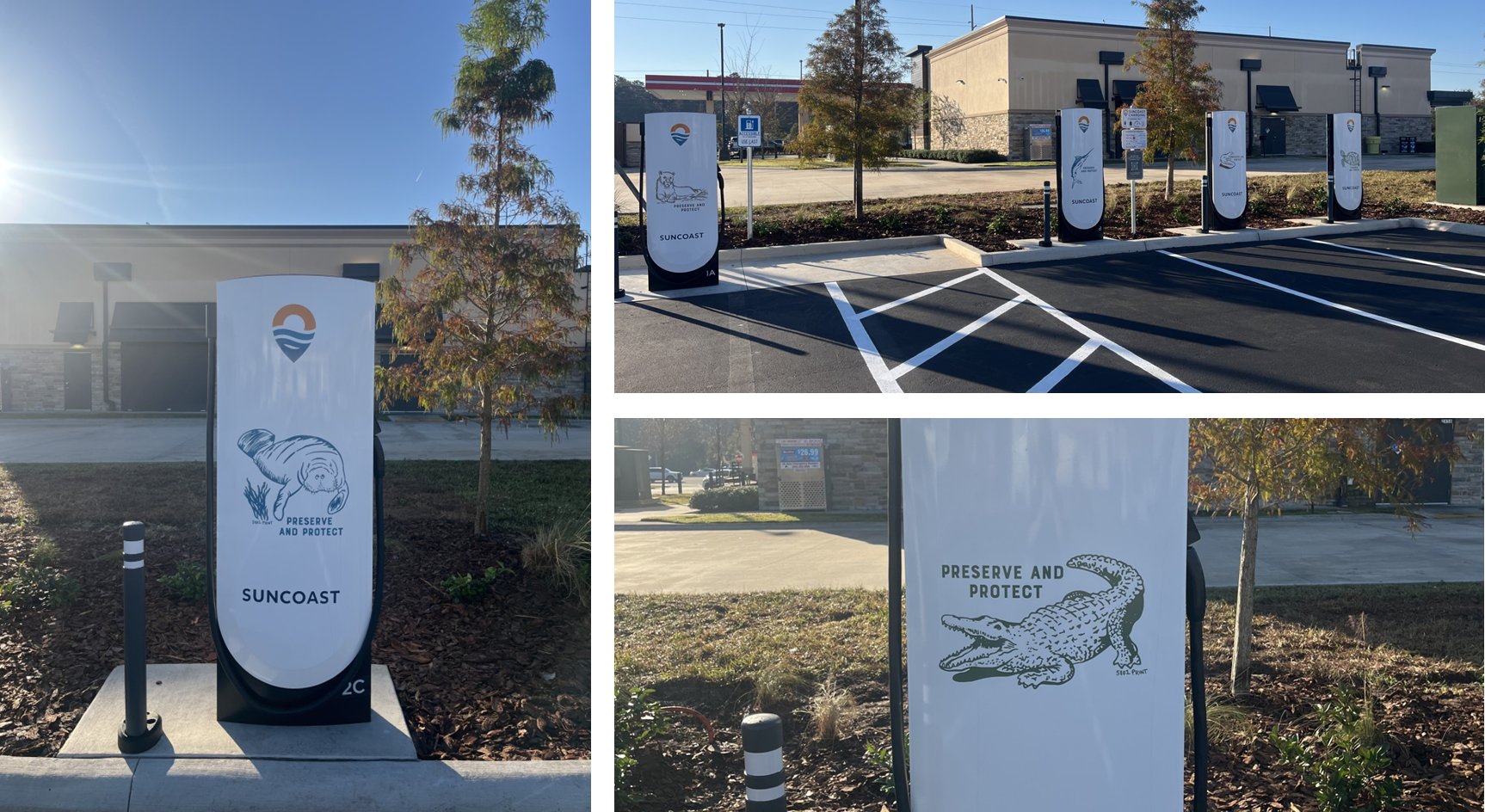
Tesla has officially launched its first branded Supercharger just months after initiating a new program that allows third-party companies to brand their own charging piles.
The site opened in Land O’ Lakes, Florida, and features eight V4 Supercharging stalls offering up to 325 kW of charging speed. It appears it was purchased by a company called Suncoast Credit Union. This particular branch is located Northeast of Tampa, which is on the Gulf of Mexico.
It features graphics of Florida animals, like alligators:
Here’s a video of the graphics being installed on the Tesla Superchargers at this site: https://t.co/oIfEPNZjAH pic.twitter.com/ENWakZ2qT9
— TESLARATI (@Teslarati) November 20, 2025
Tesla launched this program back in September, and it basically was a way to expand its Supercharger presence and also allow companies to pay for the infrastructure. Tesla maintains it. When it announced the “Supercharger for Business,” it said:
“Purchase and install Superchargers at your business. Superchargers are compatible with all electric vehicles, bringing EV drivers to your business by offering convenient, reliable charging.”
The program does a few things. Initially, it expands EV charging infrastructure and makes charging solutions more readily available for drivers. It can also attract people to those businesses specifically.
Tesla launches new Supercharger program that business owners will love
The chargers can also be branded with any logo that the business chooses, which makes them more personalized and also acts as an advertisement.
The best part is that the customers do not have to maintain anything about the Supercharger. Tesla still takes care of it and resolves any issues:
“We treat your site like we treat our sites. By providing you with a full-service package that includes network operations, preventative maintenance, and driver support, we’re able to guarantee 97% uptime–the highest in the industry.”
It appears the Superchargers will also appear within the in-car nav during routing, so they’ll be publicly available to anyone who needs to use them. They are still available to all EVs that have worked with Tesla to utilize its infrastructure, and they are not restricted to people who are only visiting the business.
Cybertruck
Tesla reveals its Cybertruck light bar installation fix
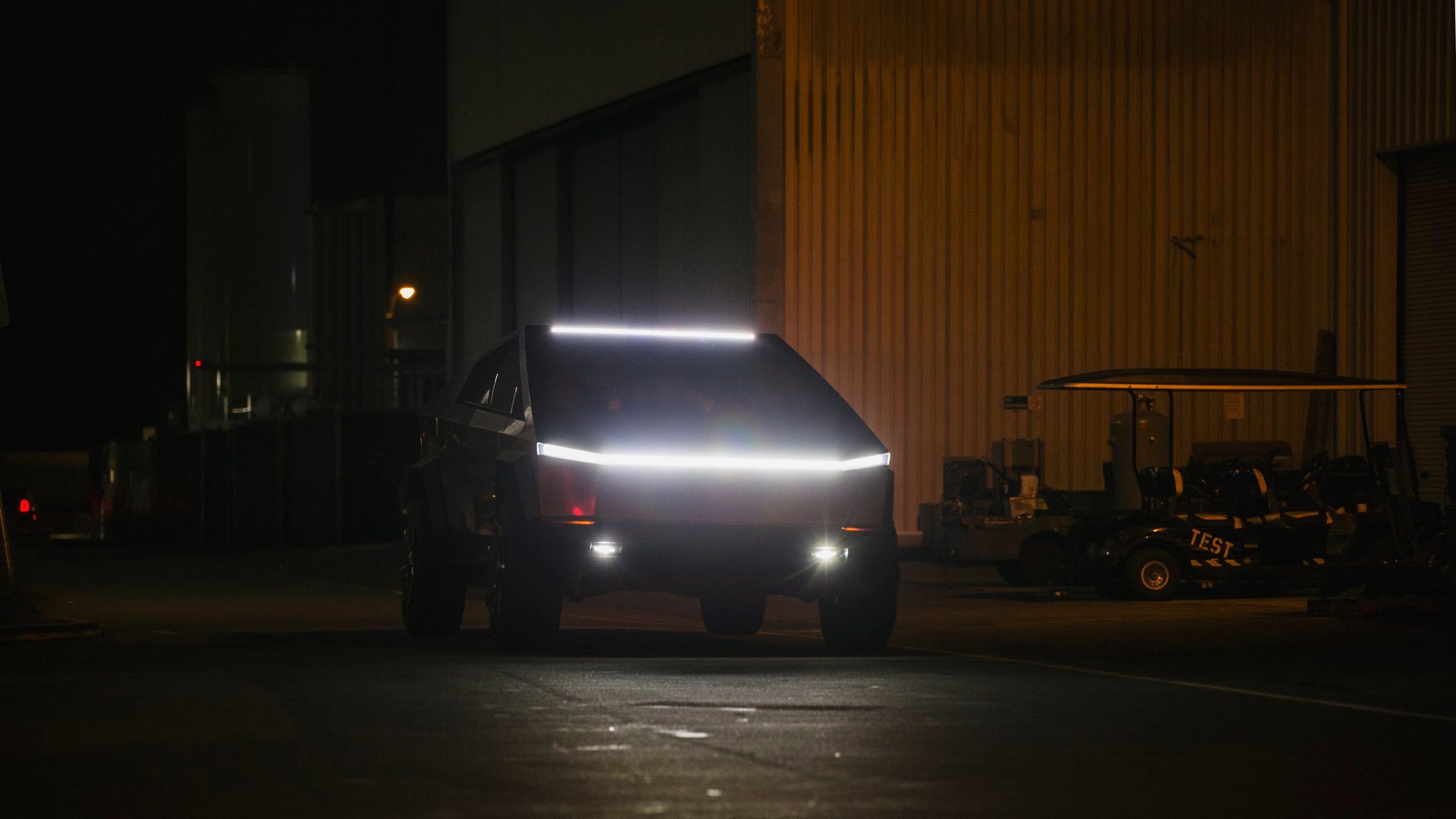
Tesla has revealed its Cybertruck light bar installation fix after a recall exposed a serious issue with the accessory.
Tesla and the National Highway Traffic Safety Administration (NHTSA) initiated a recall of 6,197 Cybertrucks back in October to resolve an issue with the Cybertruck light bar accessory. It was an issue with the adhesive that was provided by a Romanian company called Hella Romania S.R.L.
Tesla recalls 6,197 Cybertrucks for light bar adhesive issue
The issue was with the primer quality, as the recall report from the NHTSA had stated the light bar had “inadvertently attached to the windshield using the incorrect surface primer.”
Instead of trying to adhere the light bar to the Cybertruck with an adhesive, Tesla is now going to attach it with a bracketing system, which will physically mount it to the vehicle instead of relying on adhesive strips or glue.
Tesla outlines this in its new Service Bulletin, labeled SB-25-90-001, (spotted by Not a Tesla App) where it shows the light bar will be remounted more securely:
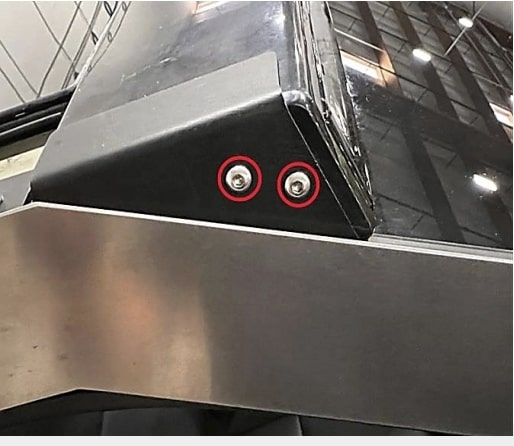
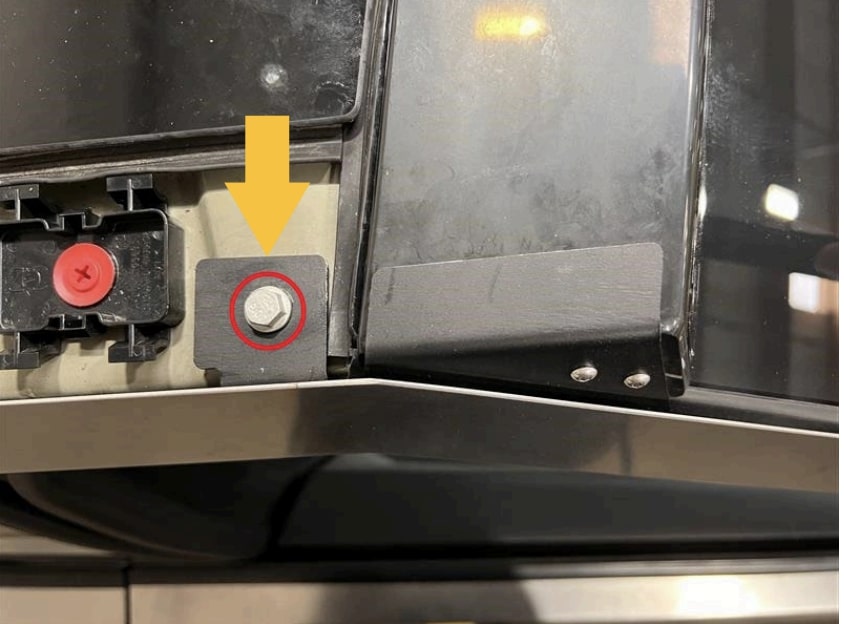
The entire process will take a few hours, but it can be completed by the Mobile Service techs, so if you have a Cybertruck that needs a light bar adjustment, it can be done without taking the vehicle to the Service Center for repair.
However, the repair will only happen if there is no delamination or damage present; then Tesla could “retrofit the service-installed optional off-road light bar accessory with a positive mechanical attachment.”
The company said it would repair the light bar at no charge to customers. The light bar issue was one that did not result in any accidents or injuries, according to the NHTSA’s report.
This was the third recall on Cybertruck this year, as one was highlighted in March for exterior trim panels detaching during operation. Another had to do with front parking lights being too bright, which was fixed with an Over-the-Air update last month.
News
Tesla is already expanding its Rental program aggressively
The program has already launched in a handful of locations, specifically, it has been confined to California for now. However, it does not seem like Tesla has any interest in keeping it restricted to the Golden State.
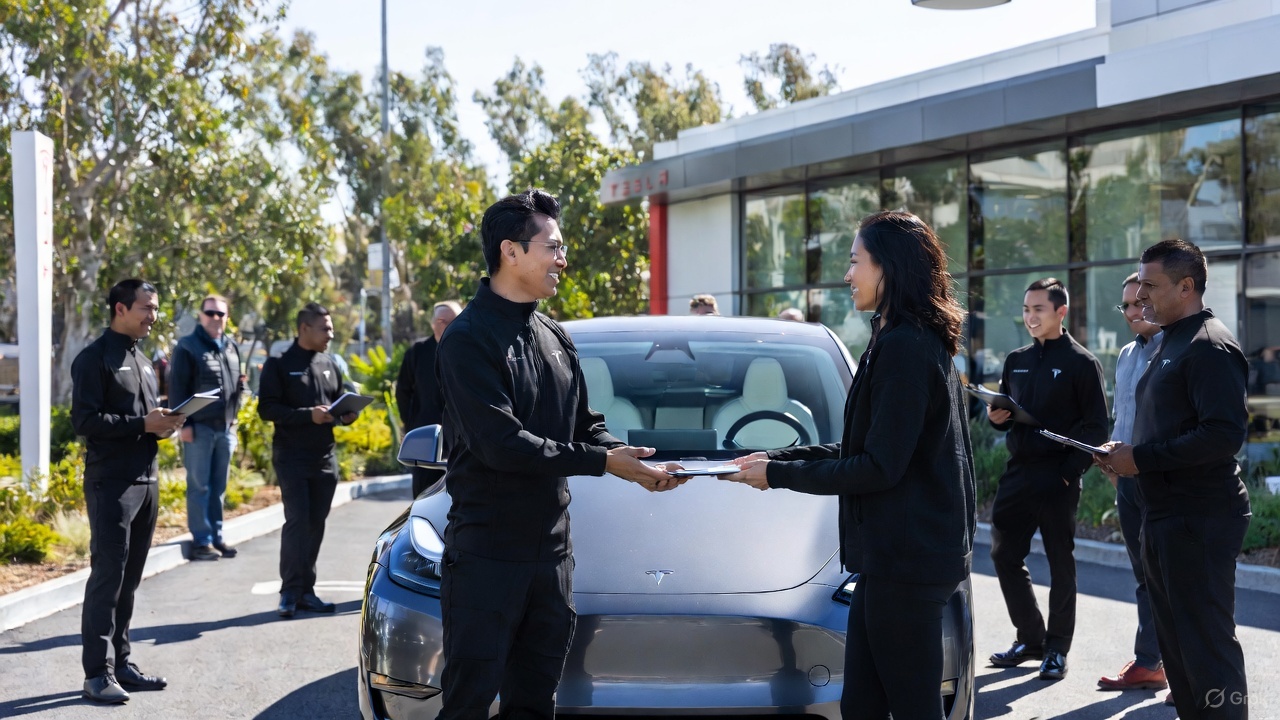
Tesla is looking to expand its Rental Program aggressively, just weeks after the program was first spotted on its Careers website.
Earlier this month, we reported on Tesla’s intention to launch a crazy new Rental program with cheap daily rates, which would give people in various locations the opportunity to borrow a vehicle in the company’s lineup with some outrageous perks.
Along with the cheap rates that start at about $60 per day, Tesla also provides free Full Self-Driving operation and free Supercharging for the duration of the rental. There are also no limits on mileage or charging, but the terms do not allow the renter to leave the state from which they are renting.
🚨🚨 If you look up details on the Tesla Rental program on Google, you’ll see a bunch of sites saying it’s because of decreasing demand 🤣 pic.twitter.com/WlSQrDJhMg
— TESLARATI (@Teslarati) November 10, 2025
The program has already launched in a handful of locations, specifically, it has been confined to California for now. However, it does not seem like Tesla has any interest in keeping it restricted to the Golden State.
Job postings from Tesla now show it is planning to launch the Rental program in at least three new states: Texas, Tennessee, and Massachusetts.
The jobs specifically are listed as a Rental Readiness Specialist, which lists the following job description:
“The Tesla Rental Program is looking for a Rental Readiness Specialist to work on one of the most progressive vehicle brands in the world. The Rental Readiness Specialist is a key contributor to the Tesla experience by coordinating the receipt of incoming new and used vehicle inventory. This position is responsible for fleet/lot management, movement of vehicles, vehicle readiness, rental invoicing, and customer hand-off. Candidates must have a high level of accountability, and personal satisfaction in doing a great job.”
It also says that those who take the position will have to charge and clean the cars, work with clients on scheduling pickups and drop-offs, and prepare the paperwork necessary to initiate the rental.
The establishment of a Rental program is big for Tesla because it not only gives people the opportunity to experience the vehicles, but it is also a new way to rent a car.
Just as the Tesla purchasing process is more streamlined and more efficient than the traditional car-buying experience, it seems this could be less painful and a new way to borrow a car for a trip instead of using your own.








